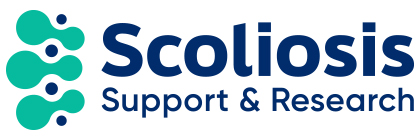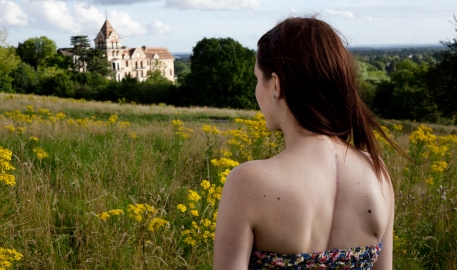Monday – Friday 9am to 5pm
AIS surgery
Adolescent Idiopathic Scoliosis (AIS) is the most common type of scoliosis. The curve tends to progress most at times of rapid growth, especially around the growth spurt in your teenage years.
Specialists will sometimes have slightly different ideas about when surgery is necessary, but all will consider factors such as how big your curve is and how much growing you have left to do. As a general rule, if your curve is around 45-50 degrees or more, your surgeon will talk to you about the possibility of surgery. Your specialist will be able to look at your pelvis on the X-ray and tell how much growing you still have to do. This reading of the pelvis is called the Risser Sign. Your surgeon will also use other information, such as periods starting in girls or facial hair in boys.
If you are offered surgery, the most important consideration is how you and your family feel. There isn’t usually any urgent need for an operation to be done straight away in children with AIS, so do not feel under pressure to make a quick decision. Some people find it easy to make a decision whereas some want to think about the situation and take time to do so.
The goals of surgery are to prevent your scoliosis getting larger and to correct the curvature as much as can be done safely. If you still have a lot of growing to do, your curve might progress and get bigger as you grow. If you have finished most of your growth but you have a curve of 50 degrees or more, it may continue to get bigger as an adult.
Surgery isn’t the right option for everyone, and if your specialist recommends an operation you will be given a choice about whether or not to go ahead with it. The operation can be a little easier for a younger person since your spine will be more flexible than it is when you are older. For some young people surgery is needed to help with pain, but for most AIS patients, it is intended to straighten the spine, to reduce the visible appearance of scoliosis, and to stop the curvature getting worse.
Before the operation, various tests will be done, including a Magnetic Resonance Imaging (MRI) scan of your spine from the base of your brain to the bottom of your spine, to rule out any underlying problems that might have caused your scoliosis. Additionally, the surgeon will want to test the flexibility of your spine using special X-rays, which help to decide how much of the spine they need to operate on. Finally, clinical photographs are very useful for recording the shape of your spine before surgery so it can be compared with how it looks afterwards.
The operation to correct your scoliosis involves a large team of people: nurses and doctors, an anaesthetist, neurophysiologists (who monitor the function of your spinal cord during surgery), radiographers (who take X-rays of your spine while you are asleep), and finally the surgeons. Afterwards, the recovery nurses and the intensive care team will help to look after you. Before the operation you will be given a pre-med, which will make you sleepy. You will then be given anaesthetic. The anaesthetic will be administered to you throughout the operation so that you stay asleep, and then stopped after it is over so that you wake up. You will wake up once you are back in a ward, and generally your family will be with you by this point. Some people feel a bit sick after the operation because of the anaesthetic but this will pass. There are lots of different ways to give you pain relief after surgery and your anaesthetist will discuss this with you; most people have discomfort but it is rare for people to be in severe pain.
Surgery for AIS is called spinal fusion. Spinal fusion uses metal implants (screws, wires and/or hooks) that are attached to the vertebrae in your spine and then connected to a single rod or to two rods. During the operation bone graft is placed over the implants.
These implants and rods are used to hold the spine in place until it can fuse itself. Over a period of about 12 months, this bone graft fuses (grows together) with the existing bone in your spine and forms a solid column of bone in that area. The screws, wires and hooks are made of metal-titanium, cobalt chromium or stainless steel. Surgeons will use slightly different implants and rods, and have different techniques. What you need will be affected by where in your spine your curve is, how big it is, and how much growth you still have to do. The basis of the surgery is to fuse as few segments of the spine as possible, whilst keeping the head centred over the pelvis when viewed from the front and from the side. It is not usually necessary to put the spine completely straight to achieve this correction.
Surgery can be done from the back (posterior), from the side (anterior), or a combination of the two for very stiff, large curves. Sometimes, if the ribs are prominent, small portions of them can be removed to improve appearance. The rib removal procedure is called a costoplasty.
The fusion of the bone in your spine stops that part of your spine growing. Dependent on which part of the spine the curve is, you may lose some flexibility where your spine has fused. However, a lot of the bending we do is from the hips, and lots of people report very little change to how they can move after the operation.
After the operation, you will feel exhausted and have some pain. The nurses and doctors looking after you will give you medication to help with the pain. Constipation is also a common issue after this surgery. The sooner you start to eat, drink and move about, the better you will feel. The time you will spend in hospital depends on many things, especially on how extensive your operation is. Usually, the stay is about 4 to 7 days. By the time you are ready for home, you should see some of your mobility returning.
Once you are home you can gradually build up your activity levels. The general guideline for a return to school is around 6 weeks but some people feel well enough to go back more quickly. Your specialist will tell you what you can and can’t do, but generally you can start to do some exercise after you go back to school. Many patients will be back to doing most of their normal activities by around 6 months after the operation, but some activities such as football and other contact sports should be avoided for longer. Keeping moving will help you to recover after your operation.
Glossary
Anterior – the front of your body
Posterior – the back of your body
Implants – the hooks, screws or wires that your surgeon will use to
attach the rods to your spine
Rod – the long piece of metal that is attached to your spine to keep
it straightened while it fuses
Risser Sign – a scale of 1-5 that shows how much growth is left, it
is worked out by looking at the pelvis
Costoplasty – an operation to remove small portions of the ribs
Idiopathic – no known cause
Available in large print format on request
If you would like to talk further about any aspect of scoliosis, SAUK is here to help; please call our helpline or contact us via post or using our e-mail address info@sauk.org.uk.
© 2024 Scoliosis Support & Research | Scoliosis Support & Research is a registered charity no. 1181463
Website design & development by Pedalo

